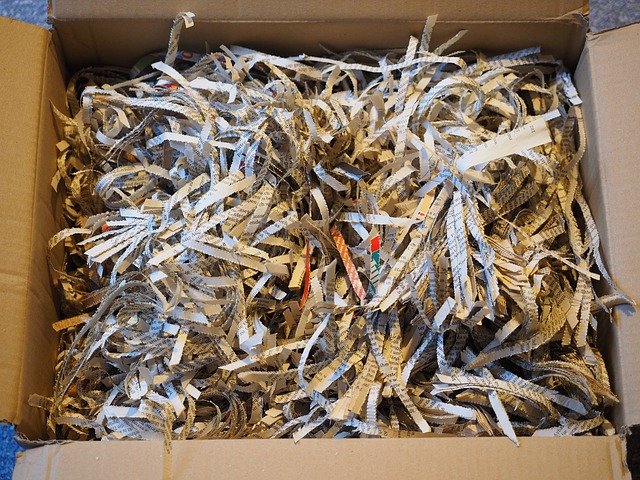Office waste is not just a concern for the environmentalists, but it is also a considerable expense for the management. Many adults spend most of their time at work in offices. Their activities there has a significant impact on waste and environmental pollution. While unnecessary waste generated at a workplace is a waste of material products, at the same time, it is a loss of all the resources that go into its production. Employees generate office waste in several ways, but notable waste originates from paper, stationery items, disposable utensils, takeaway meal boxes, plastic bags, and e-waste. In general, paper waste should be reduced with optimized printing, using small metal containers for office storage needs, utilizing reusable aluminum bottles and ceramic mugs, and benefiting from reusable dishware at the office kitchen.
With the ever-growing awareness of environmental pollution, many individuals are turning their lifestyles towards greener living. Offices and other workplaces are also paying heed to this social topic. Brands are moving towards sustainable productions and products to win over customers with their green campaigns. However, moving towards green living can be overwhelming for some individuals. They may find it challenging to adapt to the lifestyle changes or not even know how to start.
Remember, it is not always about implementing significant changes abruptly. Relatively small incremental steps over a more extended period are the way to go so that people can adapt to the changes easily. This article will go through some easy steps that employees and employers can take towards a greener office environment. The article will primarily discuss two types of waste reduction in offices: paper-related waste reduction and non-paper waste reduction.
Reduce paper waste
Paper waste is one of the high costs in running a modern office. It makes up a large portion of the trash that offices generate. If you can reduce the amount of paper waste in your office, you can have a positive impact on the environment and, at the same time, reduce operating costs at your workplace, benefitting the company and the environment.
- Think twice before you print: we are used to printers and paper being always available. That’s why many people do not pay attention when they print. However, you should always think twice before printing anything. Make sure that you necessarily need the files in a printed hardcopy and only then print it out. Furthermore, if you must print something, always opt for printing double-sided. If you want to reduce printing paper waste even further, you can reduce print margins and optimize font sizes so that only necessary paper is used when printing large files with many pages.
- Switch to digital forms and data files: instead of relying on paper forms to collect information, you can always use digital forms. There are multiple websites where you can create free and secure online forms. These forms can be shared easily as well. Editing such online forms is also easier, contrary to printed files where edits and errors mean printing new documents all over again.
Managing hardcopy printed files and folder is not only a hectic process, but it can also lead to creating paper waste in offices. Therefore, companies should adapt to the digital age and implement online data management systems. So, one can always save and edit databases in a paperless manner.
- Direct deposit or online payroll: both these methods are fast and efficient ways to get employees their paycheck. This eliminates the need for paper pay stubs, which is great because such pay slips and pay stubs end up nowhere but, in a drawer. An added advantage is that employees can access their pay stubs online anywhere and anytime, bringing much-needed convenience.
- Using recycled paper: indeed, there is plenty of office paper laying around on desks that is used for notetaking and brainstorming. Such unofficial documents can always use recycled paper as it is not intended for official presentations anyways. Office management should actively distribute recycled paper for such needs.
Reduce non-paper waste
Non-paper products are also a significant source of waste produced in offices. The best way to reduce non-paper waste is to switch from disposable products to reusable products. Here are some helpful tips on how to reduce non-paper waste in your office.
- Reusable lunch boxes: encourage your fellow employees to use reusable lunch boxes. This will eliminate a lot of plastic waste produced daily from takeaway lunches. There is a wide variety of such containers available in the market, so you can always buy one that fits your needs and style preferences.
- Avoiding bottled water: around 38 billion water bottles end up in landfills every year. That’s a staggering number for landfill pollution. Employers should provide water coolers and drinking water fountains at offices so that workers can opt for drinking water with glasses, mugs, or aluminum bottles.
- Provide office tableware: an office kitchenette with reusable plates and cutlery should be provided to employees. This will drastically reduce the disposable utensils waste with an added bonus feeling of eating with real crockery.
- Save electricity: this is an essential part of waste management. Most offices leave computers and lights on all night. We can reduce wasted electricity by simply installing automatic switches that can turn off lights, fans, air conditioners, and other such appliances when they are not in use. Also, encourage your employees to turn off their computers completely before leaving work. It is also advisable to replace regular light bulbs with LED light bulbs.
It does not matter if you have ten employees or a hundred; it can be challenging to change employee attitudes abruptly. Therefore, implement the above-mentioned steps one at a time, educate employees about such issues, and work together to implement a greener office.





